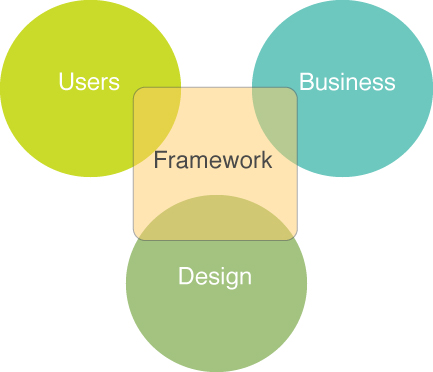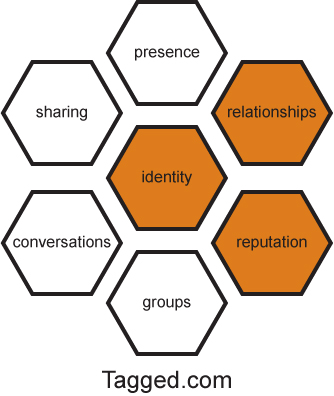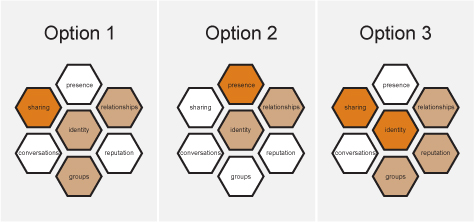Poe says the Imp of the Perverse is “...a radical, a primitive impulse—elementary” and warns, “With certain minds, under certain conditions, it becomes absolutely irresistible.” [1] Psychologists and ethics researchers, however, say we can take simple steps to align our Want and Should Selves over the three phases of decision making and help keep the Imp of the Perverse in check.
They offer four primary recommendations, which I’ll consider from a design perspective: [2]
- Recognize our multiple Selves.
- Listen to the Want Self during prediction.
- Increase the influence of the Should Self during action.
- Decrease the influence of the Want Self during action.
Figure 1 illustrates these recommendations across the decision cycle.
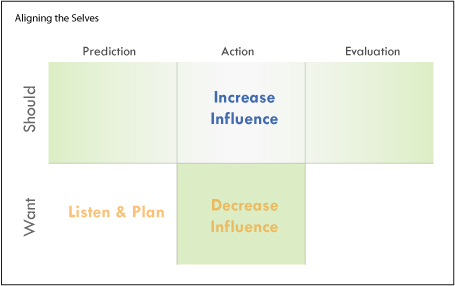
1. Recognizing Our Multiple Selves
Recognizing our multiple Selves means understanding that we all carry a bit of Poe’s Imp of the Perverse. We need to acknowledge our habit of making overly optimistic predictions, and we should identify the biases and cognitive mechanisms that change our solid ethical principles into bounded and malleable viewpoints that change with context. These are fine first steps, but more active measures are necessary.
2. Listening to the Want Self During the Prediction Phase
Ethics researchers suggest two ways of anticipating and managing the Want Self’s ability to trump ethical concerns at the moment of decision:
- highlighting and priming our motivations in advance of making a decision
- rehearsing ethically challenging situations and preparing ourselves to handle them
Highlighting and priming our motivations—the things we want, or our goals—in advance of making a decision makes it more likely we’ll take the ethical path when making decisions [2]. Designers can remind themselves—and others!—that decisions involve ethical concerns as well as business objectives and prime everyone who participates in decision making with the goal of creating the best and most appropriate user experience that matches the values of users.
Rehearsing ethically challenging situations lets designers identify powerful contextual factors that contribute to ethical fading during the action phase—such as tight deadlines or pressure from stakeholders—and prepare themselves to handle them. Simply observing the practice of rehearsing and advocating for ethical choices can offset the temporal separation of our Want and Should Selves and moderate the affects of temporal construal or visceral concerns.
3. Increasing the Influence of the Should Self During the Action Phase
Improving our ethical behavior requires that we increase the influence of our Should Selves during the action phase. Researchers suggest four ways to do this:
- defining difficult decisions in a way that emphasizes a situation’s high-level aspects
- making decisions with ethical implications early
- presenting all the options for an ethically difficult decision at the same time
- envisioning both the ethical and the unethical choices
Casting difficult decisions in a way that emphasizes the high-level aspects of a situation brings out the Should Self. [2] For example, in the case of social networks’ needing members to prove their growth models or secure additional funding, one could frame the choice of how aggressively to pursue membership goals as a trade-off between rapid, but unhealthy growth in the short term and slower, but healthier growth over the long term.
Changing the timing of ethical choices is another way of increasing the power of the Should Self during the action phase. People will commit to ethically difficult decisions in the present, so long as they will feel the effects in the future. [2] Changing the timing of such decisions by moving discussions and decisions that have ethical implications to an earlier point in the design cycle lets people to commit to a course of action in advance, when their Should Selves are prominent. For example, product or service designers who are defining social networking capabilities could present the public list of Social Networking Anti-patterns to their team members who define business objectives and set product vision. Securing early commitments to uphold good ethics in all aspects of a product’s design can help a team avoid the unethical practices the patterns describe. [3]
Presenting all the options for an ethically difficult choice at the same time offsets ethical fading and reduces the prominence of the Want Self. Presenting the options for such a choice sequentially contributes to our making bad choices. Reviewing options simultaneously lets people compare the Want and Should Selves’ choices against their previous commitments or a common framework. More on frameworks later. [2]
We should envision two kinds of choices when trying to resolve ethical dilemmas: the ethical choice and the unethical choice. [2] I recommend labeling choices to make the distinction very clear. Direct statements from users or customers about their values, goals, and beliefs—presumably gathered through personal contact with users, user interviews, and user research—make it much easier to label choices as either ethical or unethical, because the choices that clash with their values will inspire conflict.
4. Decreasing the Influence of the Want Self During the Action Phase
Researchers recommend two self-control strategies for decreasing the power of the Want Self during the action phase. Making public commitments to maintaining good ethics is one effective method, because they escalate our commitment to making the ethical choice. [2] UX designers working on social media could present A Bill of Rights for Users of the Social Web to stakeholders during the initial stages of a project—both to win their early public commitment to these principles and to make them the reference point for later decisions. [4]
The old-fashioned method of giving people time to think—what researchers call increasing the cognitive resources available to decision makers—also decreases the power of the Want Self. [2] When making ethically charged decisions, we need to remain focused on the decision and how it will affect the people involved.
Figure 2 maps these strategies to the three phases of the decision cycle—prediction, action, and evaluation.
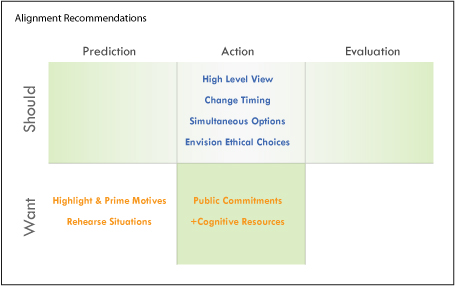
Carrots and Sticks: Ethical Standards and Sanctions
In addition to the recommendations I’ve already provided, researchers advise that we carefully consider any standards or sanctions systems—think of the United Nations, for example—we might put in place to encourage ethical choices. Sanctions combine standards of measurement, incentives, punishments, and monitoring mechanisms to encourage decision makers to do the right thing in a situation with ethical implications. When we find ourselves in ethical dilemmas, the presence of standards and sanctions systems can increase the likelihood that we’ll make ethical choices by changing the way we frame our choices and leading us to see ethical choices as sound business decisions. [2]
However, sanctions systems can also contribute to ethical fading by changing the focus of decision makers from following ethical principals or being ethical to minimally meeting a standard’s specific guidelines or provisions. For decision makers, focusing on meeting a specific goal can suppress the Should Self and instead engage the Want Self in an immediate effort to achieve the goal. Some research findings indicate that ineffective or weak sanctions systems actually decrease ethical behavior! [2]
Overall, instead of enhancing the ethical quality of our decisions, weak standards and sanctions can actively fade the ethical aspects of our decisions and encourage the predominance of the Want Self.
